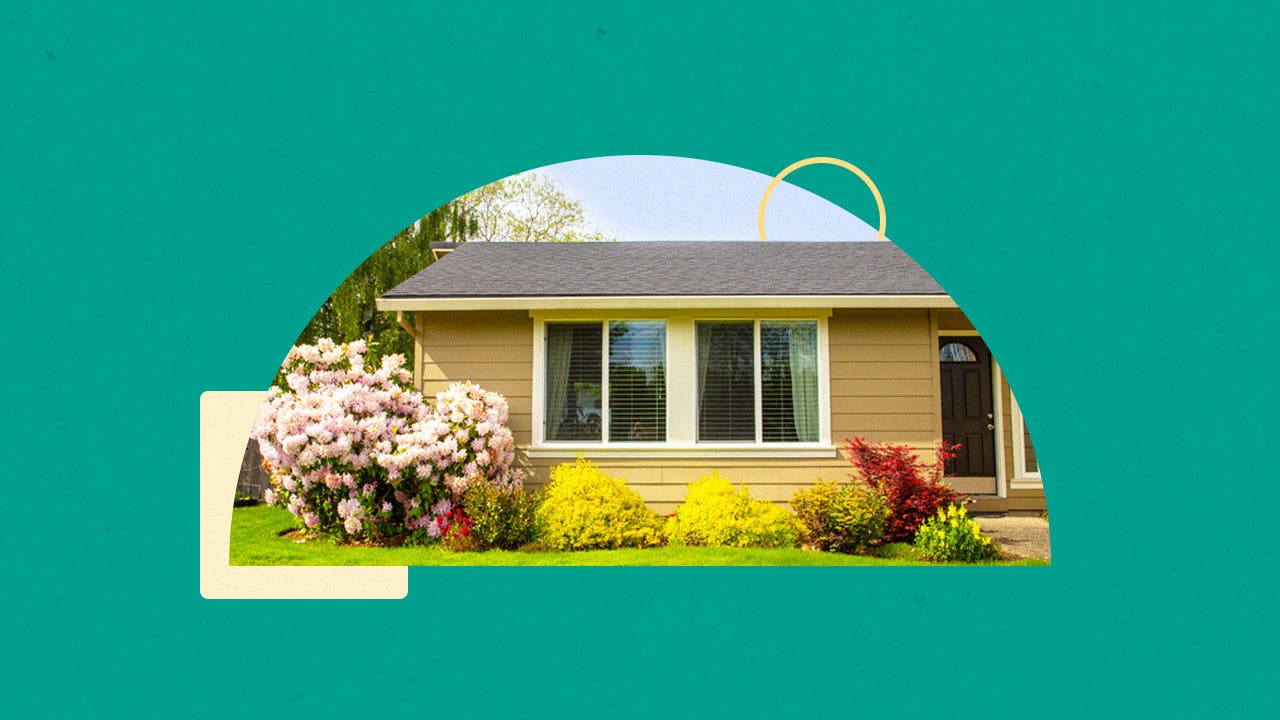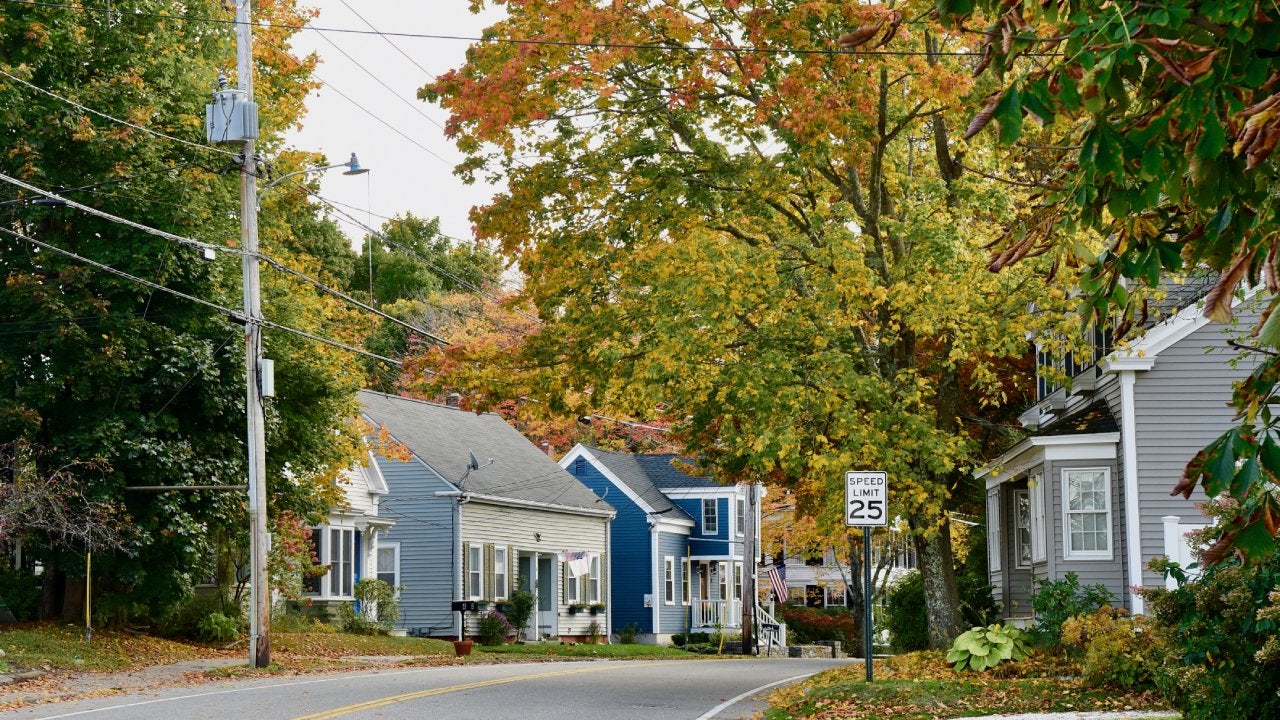What is a reverse mortgage?

Key takeaways
- A reverse mortgage allows homeowners who are 55 and older to tap their home’s equity for tax-free payments.
- The loan comes due when you no longer live in the home, either because you move or pass away.
- To qualify, you must own or have nearly paid off your home, live in the home as your primary residence, and continue to pay property taxes, insurance premiums and other upkeep costs.
What is a reverse mortgage?
A reverse mortgage is a type of loan that pays off the current mortgage of homeowners ages 55 and older and then allows them to receive tax-free payments by borrowing against their home’s equity.
Typically, homeowners use reverse mortgages to:
- Supplement retirement income
- Pay off high-interest debt
- Pay for home repairs or improvements (e.g., adding accessibility features)
- Cover medical expenses
Some homeowners also use reverse mortgages to delay taking social security until age 70, when the benefits max out. And some reverse mortgages allow the borrower to buy a new primary residence.
“In each situation where regular income or available savings are insufficient to cover expenses, a reverse mortgage can keep seniors from turning to high-interest lines of credit or other more costly loans,” says Bruce McClary, senior vice president of media relations and membership at the National Foundation for Credit Counseling.
HECM vs. non-HECM reverse mortgages
How does a reverse mortgage work?
Reverse mortgages can be complicated. Here are the basics.
How much can you borrow?
To be a candidate for a reverse mortgage, you’ll need a considerable amount of equity in your home. You won’t be able to borrow the entire value of your home, however, even if you’ve paid off your primary mortgage.
For a HECM, the amount a homeowner can borrow, known as the principal limit, varies based on the age of the youngest borrower or eligible non-borrowing spouse, current interest rates, the HECM mortgage limit — $1,149,825 in 2024 and $1,209,750 in 2025 — and the home’s value.
You’re more likely to be eligible for a higher principal limit the older you are, the more the property is worth and the lower the interest rate. You might also be able to borrow more if you get a variable-rate HECM.
How will you be paid?
The type of HECM you choose determines your options for payments. With a variable interest rate, your payment options include:
- Equal monthly payments, provided the property remains at least one borrower’s primary residence
- Equal monthly payments for a fixed period
- A line of credit that can be accessed until it runs out
- A combination of a line of credit and fixed monthly payments for as long as you live in the home
- A combination of a line of credit, plus fixed monthly payments for a set length of time
If you choose a HECM with a fixed interest rate instead, you’ll receive a one-time, lump-sum payment.
How do you repay a reverse mortgage?
Your reverse mortgage comes due when you no longer live in the home, either because you move or pass away. There are a few ways to repay the loan:
- Sell the house: Either you or your heirs may sell the home to cover the loan. If there are any proceeds left, you or your heirs can keep them.
- Turn the house over to the lender: If the loan balance is higher than the property’s value, your heirs may give the lender the house to satisfy the debt.
- Pay off the loan balance: If your heirs would like to keep the home, they may either pay the lender the full loan balance or 95 percent of the appraised value of the house, whichever is less.
While you’re not required to repay the reverse mortgage while you live in the home, you’ll still need to pay for homeowners insurance, property taxes, any homeowners association dues and the home’s upkeep.
How much does a reverse mortgage cost?
With a HECM reverse mortgage, just like a standard purchase mortgage, you’re required to pay closing costs, including:
- Mortgage insurance premiums (MIPs): There’s a 2 percent initial MIP due at closing, as well as an annual MIP equal to 0.5 percent of the outstanding loan balance. The MIP can be financed into the loan.
- Origination fee: To process your HECM loan, lenders charge the greater of $2,500 or 2 percent of the first $200,000 of your home’s value, plus 1 percent of the amount over $200,000. The fee is capped at $6,000.
- Servicing fees: Lenders can charge a monthly fee to maintain and monitor your HECM for the life of the loan. This monthly servicing fee can’t exceed $30 for loans with a fixed or annually-adjusting rate, or $35 if the rate adjusts monthly.
- Third-party fees: Third parties can charge their own fees as well, such as for the appraisal and home inspection, a credit check, title search and title insurance or a recording fee.
Your reverse mortgage also accrues interest every month. You can roll these charges into the loan balance. Interest rates on reverse mortgages vary by lender, but they tend to be higher than those for a regular mortgage.
Reverse mortgage requirements
To be eligible for a HECM reverse mortgage, the primary borrower must be age 62 or older. Other requirements include:
- Owning your home outright or having paid down most of your mortgage
- Living in your home as your primary residence
- Participating in an information session provided by a U.S. Department of Housing and Urban Development-approved reverse mortgage counselor
- Being current on all federal debt
- Continuing to pay homeowners insurance, property taxes and any homeowners association dues
Types of reverse mortgages
Here are the types of reverse mortgages you’re likely to find:
- Home Equity Conversion Mortgage: The most popular type of reverse mortgage, HECMs are insured by the FHA. You can choose how to receive the payments, such as fixed monthly payments or a line of credit — or both options at once. Although widely available, HECMs are only offered by FHA-approved lenders, and before closing, all borrowers must consult with a U.S. Department of Housing and Urban Development-approved reverse mortgage counselor.
- Proprietary reverse mortgage: This is a loan offered by a private reverse mortgage lender and not insured by the government. Some proprietary reverse mortgage options allow you to take out a loan at age 55, rather than age 62. Typically, you can receive a larger loan advance, too, especially if you have a higher-valued home.
- Single-purpose reverse mortgage: Not as common as a HECM or a proprietary reverse mortgage, this is a loan from a state or local government agency or nonprofit. Generally, it’s the least expensive of the three options, but you can only use the loan to cover one purpose, such as a handicap-accessible remodel, says Jackie Boies, a senior director of housing services for Money Management International, a nonprofit debt counselor based in Stafford, Texas.
Pros and cons of a reverse mortgage
Reverse mortgage loans can be a useful tool, but they aren’t without drawbacks.

Pros
- Provide tax-free supplemental income
- Allow homeowners to age in place
- Don’t require repayment during the borrower’s lifetime — unless they move

Cons
- Balance grows with time and is often settled by the homeowner’s heirs
- Payments can affect eligibility for Medicaid programs and Supplemental Security Income (SSI) benefits
- Heirs must pay a large sum to keep the house
- Can be complicated, especially if a borrower remarries after taking out the loan
Is a reverse mortgage right for you?
For many homeowners, a reverse mortgage makes it possible to stay in their homes as they age while receiving tax-free income. Many use the funds to supplement Social Security, cover medical expenses, pay for in-home care or make home improvements or modifications.
“A reverse mortgage can make sense for some seniors, mainly those who answer yes to these questions: Do you need additional income to pay your bills? Do you plan to stay in the home? And are you OK with passing on the property to your heirs with a debt they’ll need to pay off?” says Jeff Ostrowski, principal writer and housing market analyst for Bankrate.
But keep in mind: While not all reverse mortgage lenders use high-pressure sales tactics, some do use them to attract borrowers. Proceed with caution.
“While a reverse mortgage creates some breathing room in your budget, borrowers beware,” Ostrowski says. “Lenders market these products aggressively, and the fees can be steep.”
“We had three clear goals in getting our reverse mortgage”
Alternatives to a reverse mortgage
If you’re not sold on taking out a reverse mortgage, consider these other options:
- Home equity loan or home equity line of credit (HELOC): Both options allow you to borrow against the equity in your home — up to 85 percent, in most cases. With a home equity loan, however, you’ll have to make monthly payments. With a HELOC, you’ll make payments after the draw period ends. The interest rates and fees for both options tend to be lower than those of a reverse mortgage.
- Refinancing: If you’ve yet to pay off your mortgage, refinancing to a loan with a lower rate could lower your monthly payments. You could also refinance to a loan with a longer term. For example, if you have 10 years left on your loan, you could refinance to a loan with a 20-year term. This will lower your monthly payments significantly, but you will pay more in interest overall. You could also investigate a cash-out refinance.
- Shared equity agreement: With this arrangement, you’ll partner with a company to get money in exchange for a percentage of your home’s value — and often a piece of future appreciation as well. Like reverse mortgages, you aren’t obligated to make monthly payments with this option, but the money — technically an investment, not a loan — must be repaid once the term ends.
FAQ
You may also like

What is a second mortgage, and how does it work?

Mortgages for retirees and older adults

Reverse mortgage pros and cons




